Ammonite facts, pictures and information.
Ammonites are prehistoric marine mollusks with distinctive curled shells. Once abundant in Earth’s oceans, ammonites – along with the dinosaurs and many other species – became extinct during the Cretaceous-Paleogene Extinction Event that occurred around 66 million years ago.
Ammonites were cephalopods, and are related to living cephalopods such as octopuses and nautiluses.
Read on to find out more about these once-abundant prehistoric animals...
Page Index
- Free Ammonite Worksheet
- What Is An Ammonite?
- When Did Ammonites Live?
- When Did Ammonites Become Extinct?
- Paleocene Ammonites
- An Ammonite’s Body
- Ammonites Used As Index Fossils
- Animals Related To Ammonites
- Types Of Ammonite
- Discover More About The Mesozoic Era And Dinosaurs
Related Pages
- See a selection of awesome books on prehistoric life: Prehistoric Animals Books
- Love natural history? Check out our list of the Best Nature Documentaries Ever Made
Free Ammonite Worksheet
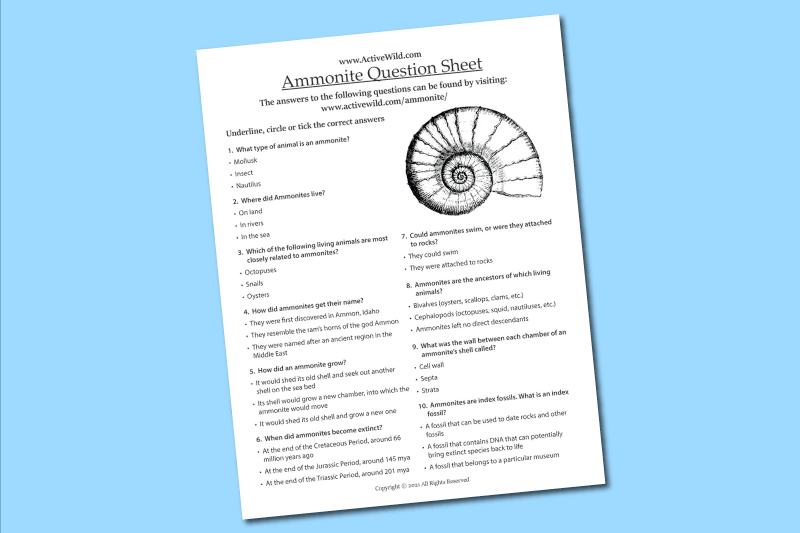
Test your knowledge of ammonites with this free worksheet. Click here or on the image above to view / download – no sign-up required.
The answers to all of the questions can be found on this page.
What Is An Ammonite?
An ammonite is a prehistoric marine animal belonging a now-extinct group of mollusks known as Ammonoidea. Specifically, ammonites are ammonoids of order Ammonitida, but the term ammonite is also used to refer to all ammonoids.
(On this page we’ll use the more specific definition unless specified.)

Ammonites belonged to the mollusk group Cephalopoda, and are related to living cephalopods such as octopuses, squid and nautiluses.
Ammonites had flat, coiled external shells. They ranged in size from 3mm / 0.12 in. to over 3m / 10 ft. in diameter.
When we think of ammonites, we usually picture just those tightly-coiled shells, because in most cases these are the only body parts to have become fossilized.
When living, however, the ammonite’s head and tentacles would have projected from the end of the curled shell.
The shells of some ammonite species were heavily ridged, while others were smooth. Some ammonite shells had bumps and spines.
Ammonites were named after the Greek god Ammon, because their shells resemble the ram’s horns with which the god is often depicted.
Ammonites were abundant in Earth’s prehistoric oceans from the early Jurassic Period up to the latter half of the Cretaceous Period.
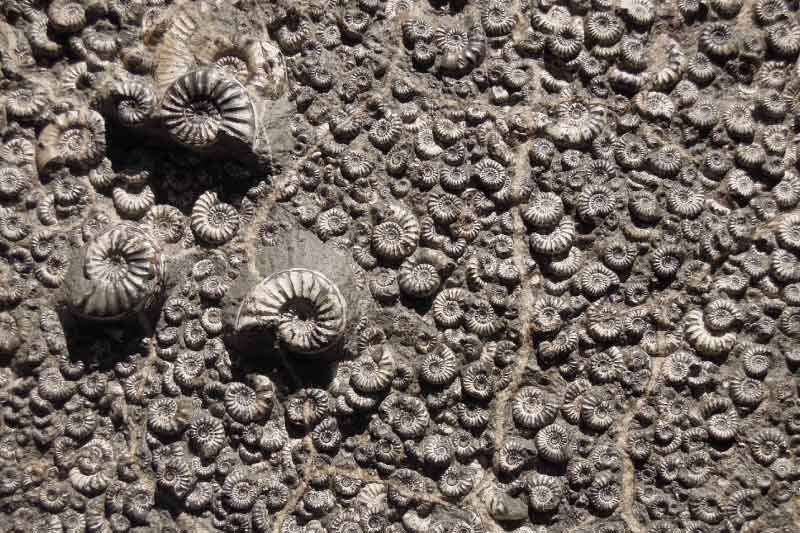
Ammonites were free-swimming animals that probably fed on plankton, marine vegetation and slow-moving marine animals.
They swam by forcibly expelling water from their bodies – pushing themselves through the water. This means of jet propulsion is still used by modern cephalopods such as octopuses and nautiluses.
When Did Ammonites Live?
Ammonoids (the group of animals that includes ammonites and other, related animals) first appeared around 409 mya (million years ago), during the Devonian Period of the Paleozoic Era.
Ammonites appeared in the Jurassic Period, which began around 201.3 mya.

When Did Ammonites Become Extinct?
Ammonites became extinct, along with the dinosaurs and 75% of all life on Earth, during the Cretaceous-Paleogene Extinction Event, which occurred around 66 mya.
This global extinction event marked the end not just of the Cretaceous Period, but also of the entire Mesozoic Era.
The number and diversity of ammonites had already begun to decline in the second half of the Cretaceous Period.
The ammonites left no direct descendants. Their extinction marked the end of the subclass Ammonoidea.
Paleocene Ammonites
There is some evidence to suggest that certain ammonites (most notably those of genus Scaphites) may have survived the Cretaceous-Paleogene Extinction Event and lived several million years into the Paleocene epoch.
Ammonites have been found in rock formations dating to the Paleocene in Turkmenistan in Central Asia, and in the Tinton Formation in New Jersey.
The presence of ammonites in the Paleocene remains controversial due to the small amount of fossil evidence.
An Ammonite’s Body

An ammonite’s shell is divided into numerous chambers. This both strengthens the shell and provides a means for the ammonite to swim at the correct depth.
The ammonite’s soft body inhabited only the last chamber. As the ammonite grew, new, chambers were continually added to the front (open) end of the shell. The ammonite would then move into the new chamber.
The ammonite’s head, beak-like jaws and tentacles projected from the open end of the last chamber.
A small tube – known as a siphuncle – ran through the chambers of an ammonite’s shell. The ammonite could alter the amount of gas in the chambers via this tube, thereby controlling its buoyancy and the depth at which it swam.
The wall between each chamber is known as a septa. Lines known as sutures mark where each septa joins the ammonite’s outer shell.
An ammonite can be distinguished from other ammonoids by the ornate patterning of its sutures.
Female ammonites were larger than males, probably to allow the production of large quantities of eggs.
This size difference led paleontologists to erroneously classifying males and females of the same species as being two different species!
Ammonites Used As Index Fossils
Paleontologists study ammonites not only to find out about the animals themselves, but also to find out more about other species.
Because ammonites were so abundant, the numbers and types of ammonites present in a particular layer of rock gives a good indication of when that rock was formed – and, therefore, when other fossils found in that rock were likely to have been formed.
Fossils that can be used to date other fossils in this way are known as index fossils.
One of the pioneers of this method of dating rock layers was English geologist William Smith (1769 –1839). The self-educated Smith’s work led to his recognition as the “Father of English Geology”. (Source)
Animals Related To Ammonites
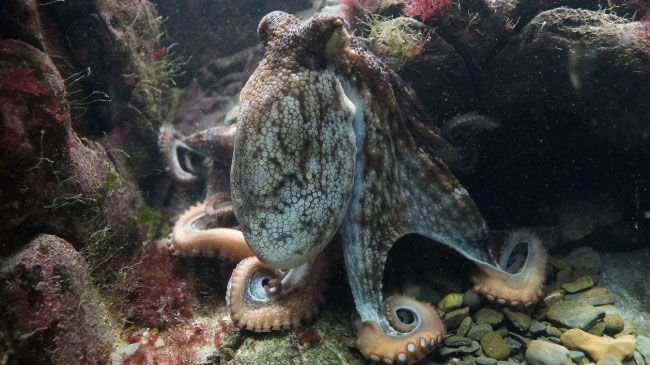
Ammonites are mollusks (molluscs in British English) in the subclass Ammonoidea, which itself is part of the class Cephalopoda – a group of mollusks whose living members include octopuses, squid, cuttlefish and nautiluses.
Today, two subclasses of Cephalopoda remain: Coleoidea (octopuses, squid, and cuttlefish); and Nautiloidea (nautiluses and related animals).
Although ammonites resemble nautiluses, which today are found in the coral reefs of the Indo-Pacific, they are more closely related to the other branch of living mollusks: Coleoidea.
Types Of Ammonite
Over 10,000 species of ammonite have been found. Below are examples of ammonites from the Jurassic and Cretaceous Periods.
Dactylioceras
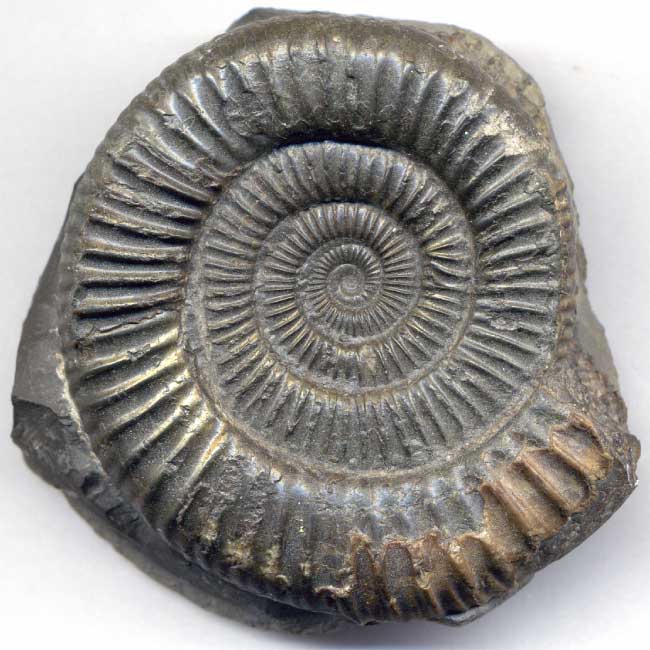
Dactylioceras is a genus of ammonite that lived in the Early Jurassic Period. It was widespread and abundant, with specimens having been found on most continents. It was likely a slow-moving scavenger.
At least 50 Dactylioceras species have been identified. Most were around 4 in. / 10 cm in diameter
Stephanoceras
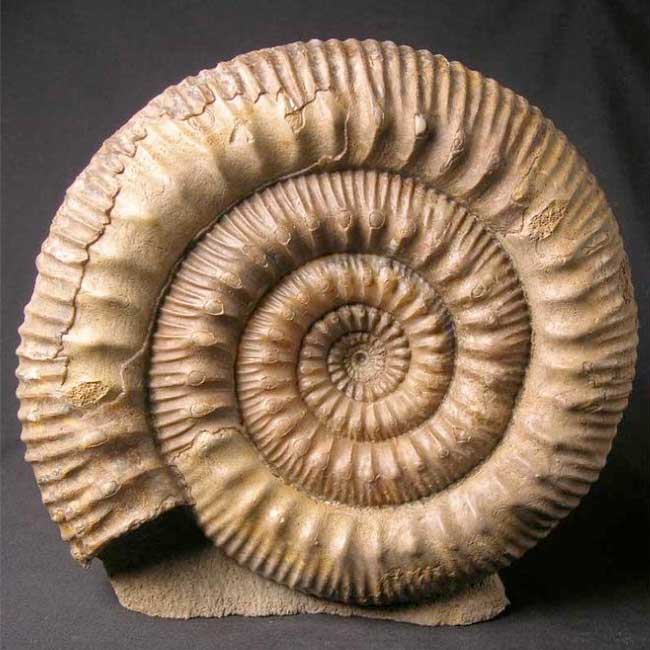
Stephanoceras was a genus of ammonite from the Middle Jurassic. It can be identified by its relatively large size (specimens with diameters of up to 10 in. / 27 cm have been found), and by its ridges and bumps.
Mortoniceras
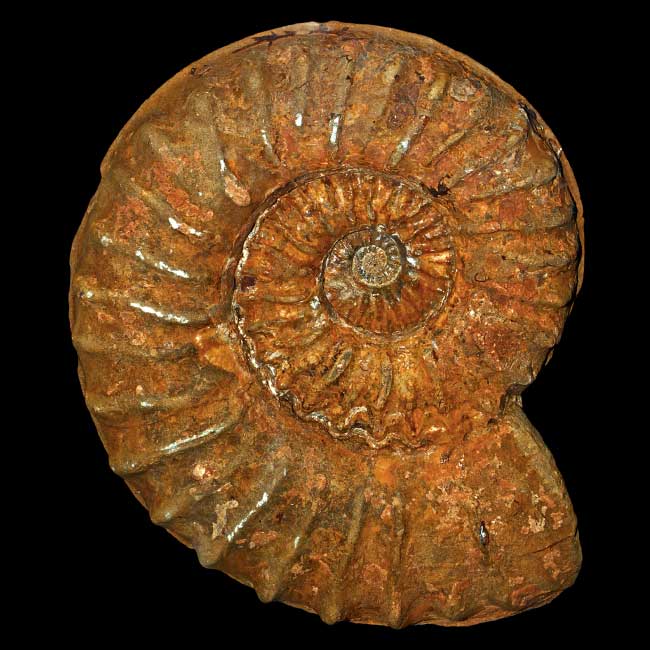
Mortoniceras is a genus of ammonite from the Early Cretaceous Period. Specimens, which can be up to 12 in. / 30 cm in diameter, have been found in Europe, Asia and both North and South America.
Scaphites
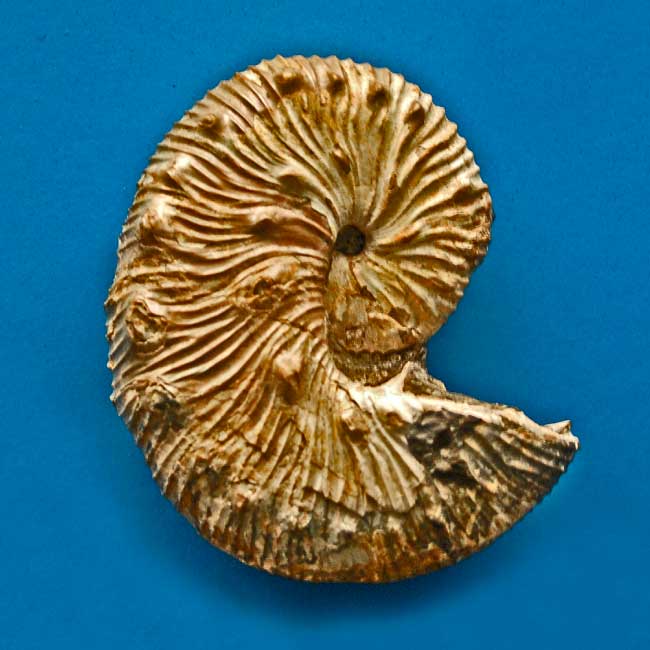
Scaphites is a genus of ammonite that lived in the Late Cretaceous Period. It can be recognized by its unusual, hook-like shape. In its early stages it grew in the usual curled shape, but later in its life its shell straightened out, before curling once more to form a hook.
Mantelliceras

Mantelliceras is a relatively large (diameter up to 5 in. / 13 cm) ammonite genus that lived during the Late Cretaceous. Specimens have been found in Europe, Asia (Japan), and North America.
Parapuzosia

Parapuzosia is a genus of ammonite that lived during the Late Cretaceous. It contains Parapuzosia seppenradensis, the largest-known ammonite, with specimens of diameter 11 ft. / 3.5 m having been discovered.
Ammonite Animal Facts: Discover More About The Mesozoic Era And Dinosaurs
- The Jurassic Period Facts: The Ultimate Guide To The Second Period Of The Mesozoic Era
- Jurassic Dinosaurs List: Discover The Dinosaurs That Lived In The Jurassic Period
- Jurassic Animals – A List Of Animals That Lived In The Jurassic Period (That Weren’t Dinosaurs!)
- The Cretaceous Period Facts: The Ultimate Guide To The Third & Final Period Of The Mesozoic Era
- Cretaceous Period Dinosaurs List With Pictures & Facts: Discover The Dinosaurs That Lived In The Cretaceous Period
- Cretaceous Period Animals That Weren’t Dinosaurs


